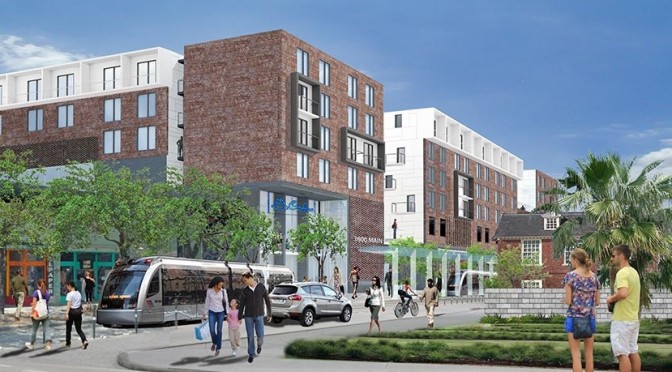To most people, the words “Houston” and “Walkable” don’t really belong in the same sentence.
The Bayou City has long been characterized by its lack of zoning, boiler room summers and seemingly infinite miles of car-dependent, low-rise developments. But those in the city today have been seeing huge changes over the past few years. Here’s more on the report from Nancy Sarnoff of the Houston Chronicle…
Greater Houston is continually cited as one of the country’s most sprawling large metro areas. But as more Houstonians express an interest in living in walkable urban neighborhoods and developers build more compact sections of shops, housing and offices, will our future be as spread out as it is today?
Houston ranked No. 15 on a list of the country’s top 30 metro areas based on the amount of office and retail space jointly developed in “Walkable Urban Places,” or “WalkUPs,” according to a national study on walkability and urbanism.
The report also examined development patterns and other factors to predict how walkable these metros are likely to become. Houston ranked No. 13 among the 30 metros on that list.
“We think they paint Houston about right,” David Crossley, president of nonprofit Houston Tomorrow, said about the study. It was released last week by the Center for Real Estate and Urban Analysis at George Washington University School of Business in conjunction with LOCUS: Responsible Real Estate Developers and Investors, a program of Smart Growth America.
The report characterizes walkable urban development as having a higher density and a combination of real estate product types. This type of development is also connected to surrounding areas via multiple transportation options, such as bus and rail, bike routes and cars, the report said. Essentially, they are places where everyday destinations like home, work, schools and stores are within walking distance.
“The speed with which walkable urbanism is invading the city is pretty fast now,” said Crossley, whose group promotes urban development.
It’s important to note that sprawl is still the predominant layout of Houston, but as more urban and transit-oriented development comes on line, people will have a wider array of options to choose from. Take the new Mid-Main Project in Midtown… a mixed-use development that targeted specifically towards Millennials. Situated between Downtown and the Texas Medical Center, the complex is close to universities, major sports arenas, museums and concert venues of virtually every size and scope, all at the heart of the city’s transit network. Unlike the past where sprawling homes used pools, great rooms and backyards to lure buyers, the best amenity in this development is simply it’s location.
Mid-Main is just the start. As evidenced in Rice’s annual Houston Area Survey, this transformation is being led by demand… urban dwellers are seeking living spaces that are closer to their jobs, public transit and major city attractions. What’s also interesting about these domestic changes is that they’re not only good for residents, but they make Houston a better city for visitors as well. We’ll see what the future holds here, and hope these trends keep moving in the right direction.
